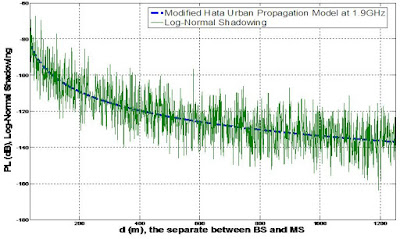Peak to Average Power Ratio II: An Introduction

A Signal Processing Perspective The statistic properties of the PAPR of multi-carrier signals can be described by CCDF (Complementary Cumulative Distribution Function). If we assume the frequency-domain symbol is complex Gaussian distributed. When the number of subcarriers, L , become large, the instantaneous power of each multi-carrier signal chip can be modeled by a Chi-distributed signal with two degree of freedom. CCDF( γ ) = Pr( PAPR > γ ) = 1- Pr( PAPR <= γ ) = 1 – [ Pr( p <= γ ) ] L >~ 1 – ( 1 – e -γ ) L Figure 1. A statistic modeling of PAPR A Coding Perspective Given a code of length n , coding rate R, what is the achievable region of triplets ( R , d , PMEPR) ? What is the relationship between PMEPR and the minimum Euclid distance (mED) d * ? All these questions belong to a Sphere Packing Problem. Given a codeset of q-ary code c with length n , what is the relationship between the size of the codeset and minimum Hamming distance (mHD) D ...





